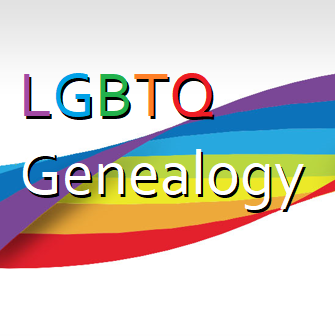Embracing Diversity in Genealogy with a Rainbow Prism Perspective
Throughout this blog series, we’ve embarked on the journey of uncovering LGBTQ clues when someone in our family’s history raises our rainbow flag fancy. Remember the confirmed bachelor or spinster aunt was not by default unlucky in finding a spouse. Perhaps they did have long-term partners but there was no legal record nor family acknowledgment to carry their stories to future generations.
When our “gay-dar” is activated, it is crucial not to dismiss, bury, or deny these clues. Much like any other ancestor, we delve into the evidence, seek supporting clues, and learn about the historical context and laws of the time. Acknowledging and documenting evidence of homosexuality is not an act of “outing” ancestors; it’s about crafting open and honest stories that contribute to a more comprehensive understanding of our family’s past.
Understanding our ancestors’ sexuality is vital in genealogy, impacting the decisions they made, from their choice of profession to where they felt safe to live. It also reverberates through their relationships with relatives and friends, shaping family dynamics. Exploring family stories through the lens of our ancestors’ sexuality helps put certain events into context, allowing for a deeper understanding.
This series aimed to showcase the potential of examining family history through a new lens—a rainbow prism. By abandoning the assumption that everyone in the past was heterosexual, you will very likely discover LGBTQ individuals in your family tree. When such discoveries occur, it’s important to integrate their stories into the narrative of the family’s history, inviting them in rather than relegating them to the shadows.
Clues can be found in various records:
- Photographs: Reevaluate existing photographs with a fresh perspective.
- Census: Look for mentions of partners and roommates.
- Newspapers: Seek stories that were hopeful and positive.
- Obituaries and Cemeteries: These may provide clues about long-term partners.
- Police and Prison Records: Search for terms like “sodomy” or “deviant.”
- Medical Records: Rare to find but invaluable evidence.
- Military Discharge: Investigate the reason for the discharge.
- Neighborhood: Explore whether ancestors lived in primarily queer areas.
- Profession: Entrepreneurs may have had more employment security.
- Domestic Partner & Marriage Records: Seek certificates in local repositories.
- Archives: Reveal unpublished personal papers, diaries, newsletters.
As this LGBTQ Genealogy series concludes, I hope it has provided insights and opportunities for a fresh perspective on family history. In the coming months, I will embark on a new series exploring LGBTQ Genealogy and Software. Thank you for your readership and comments.




Stewart you have taken this brand of research to a new level. I think this is so important to know about and you have really helped.